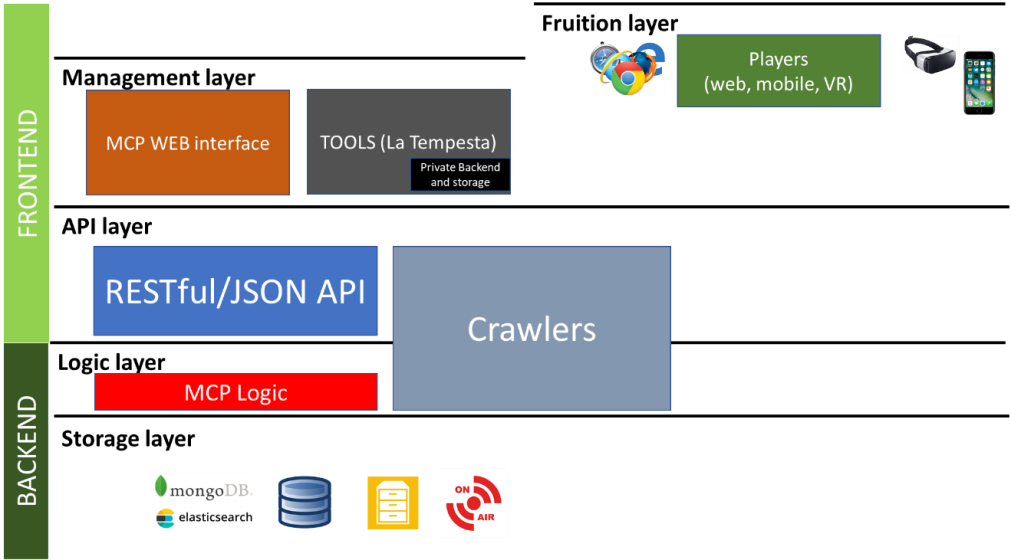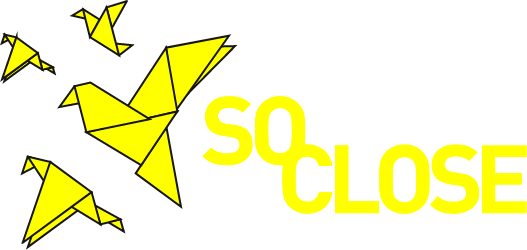The technological part of the SO-CLOSE project involves the development of a final result consisting of a set of TOOLS for the production of content with storytelling characteristics, the Memory Center Platform (MCP) system, and a module of search services for additional content related to topics of interest.
MCP Architecture

The development of all these software components (MCP Architecture, as pictured above) follows AGILE, a methodology which allows for a high degree of interaction between the technological partners and the various cultural institutions in order to obtain a final software that reflect all cultural institutions requirements.
AGILE software development is a set of techniques and methodologies which allow you to accelerate the time to market of applications or additional features, obtain higher quality code, and align the product with user preferences and needs. The biggest advantage of this methodology is that the engineering team can implement new requirements and changes requested by the cultural institutions on an ongoing basis. This makes the process flexible and ideas can be adjusted as the project growths. This makes the future results even more exciting.
SCRUM, which prescribes an operational process based on repetitive cycles of activities (sprints), is among the most popular of agile software development frameworks. Each “block” lasts 2-4 weeks and is aimed at achieving an increase or a small improvement in the application (such as additional functionality, bug fixes, etc.), maintaining the direction towards the final goal. After development, we aim for gradual and frequent releases of updates and new features.
Users, such as cultural institutions, can start using new releases right away, benefiting from the improvements immediately, without having to wait for the final version. At the same time, they can report issues and suggestions for changes or adjustments. The developers thus obtain valuable feedback on the outcome of the project, managing to correct errors and fix bugs during the development stage, thus reducing the risk of possible failure.
To successfully implement all of this, the technological partners of the SO-CLOSE project (TEMPESTA and ENGINEERING INGEGNERIA INFORMATICA) organize periodical meetings to discuss new developments and receive feedback on previous ones, sometimes also fixing any software issues that might emerge. This process allows for all project partners to always be aligned and in agreement on the partial results and, consequently, on the final software product for SO- CLOSE, called TOOLBOX.
DCH sharing tools: features and development process



